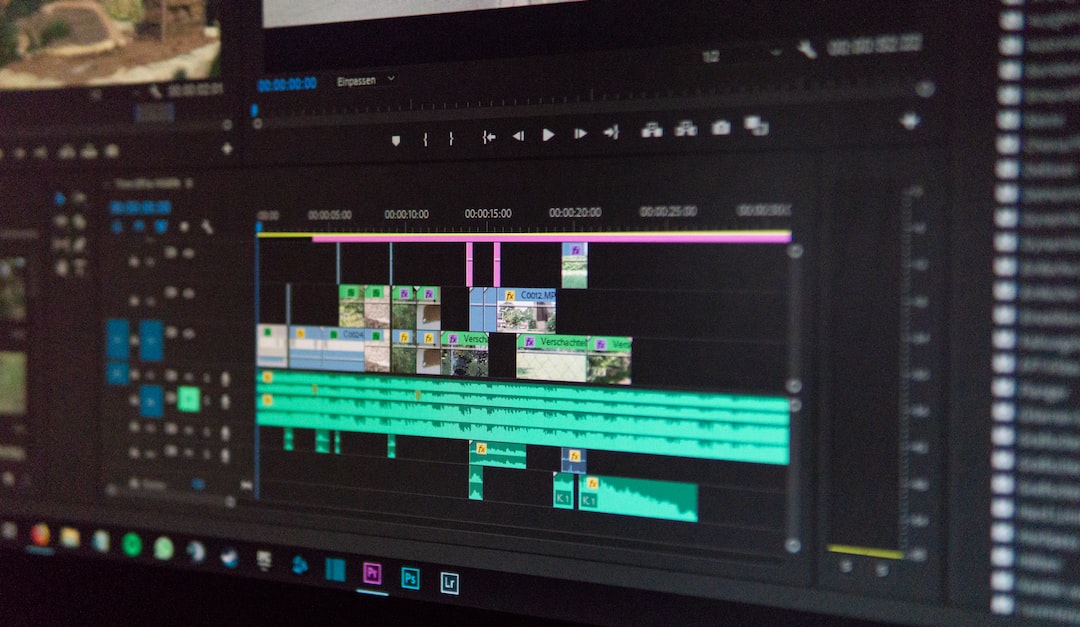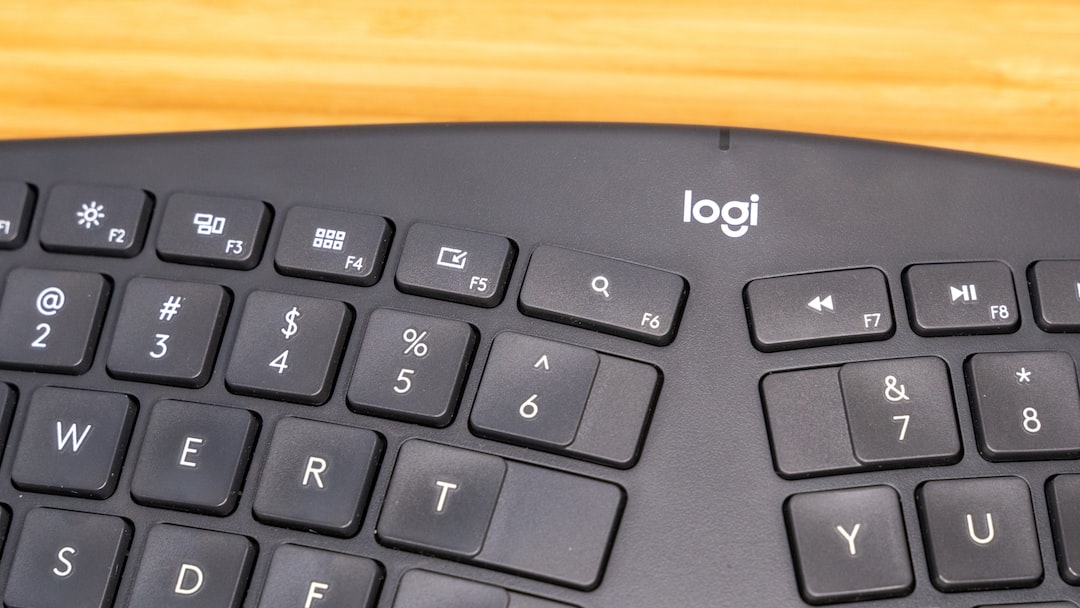Alright, Gen-Z fam, let’s dive into what’s probably one of the most exciting and A1 topics if you’re into creativity and branding: designing memorable logos. Logos aren’t just symbols or cute little marks; they’re the face of brands you vibe with. Whether it’s that iconic swoosh on your Nikes or the apple on the back of your iPhone, these logos are seared into our brains for life. But, ever wondered what goes into making something so simple yet so powerful? Like, what do you gotta do to design something that’s gonna survive next to all the hot garbage getting tossed on the internet every day?
I’ll let you in on a secret—it’s both an art and a science. It’s not just about throwing shapes, colors, and fonts together. You gotta understand how to tap into human emotion. And yeah, don’t worry—not gonna hit you with some mundane jargon. Nah. We’re gonna break it all down like your bestie straight-spilling the tea.
All set? Let’s go!
The Vibe Check: Why Do Logos Even Matter?
Before we get into the nitty-gritty details, let’s talk about why logos matter in the first place. It’s easy to shrug and be like, “Sure, a logo is cool, but whatever,” but hold up. The thing is, we live in a digital age where we’re getting blasted with info 24/7. Brands are competing for even a second of your attention, and believe me, it’s cut-throat out here. A fire logo is like your golden ticket into people’s heads.
Think of it like this: If you’ve got a logo that slaps, people will remember you. They’re gonna associate your brand with whatever vibe or message you’re pushing. You want people to think of your logo when they think of your brand. It’s not just a pretty picture; it legit represents the essence of who you are, what you’re about, and why people should care. Bottom line—it’s your brand’s visual elevator pitch.
Identity Flex: Your Logo as Your Brand’s DNA
Now, this is where we jump into how logos act as the DNA of your brand. Logos are the microscopic components of your brand’s identity, which sounds pretty wild when you think about it. But, it’s facts. Whether you’re repping streetwear, tech innovation, or sustainable products, your logo is what carries that identity like a badge of honor.
Let’s break it down: your logo has to communicate the essence of your brand in an instant. You’re not going to have five minutes to explain what you’re all about. More likely, you’ve got about five seconds—max. Whether it’s clean, edgy, minimalistic, or ultra-detailed, your logo has to express the whole vibe of your brand.
Each element of your logo, from the font you pick to the colors you use, plays a role in this. For instance, let’s say your brand is super eco-conscious. Maybe you use greens to represent sustainability, and a modern, clean font to communicate that you’re forward-thinking and innovative. On the other side, if you’re building a street brand, you might go for jagged fonts, deep blacks, and reds to give off that rebellious energy. It’s all in the details, and those details matter—a lot.
Quick Pause: The Role of a Logo
Don’t get it twisted—a logo isn’t there to literally describe what your brand does word-for-word. It’s symbolic, evocative. The best logos create a feeling. They pull at your emotions, or they make you feel seen in some way. That said, it’s not about making your logo so clever that only three people on Reddit can figure out what it means. Simplicity is your BFF here. If it’s easy to understand at a glance, you’re doing it right.
A killer logo makes people feel some type of way. It should be something that, when your audience sees it, they nod, smile, or maybe even smirk a little. It’s like a secret handshake between them and your brand. The greats—Nike, Apple, McDonald’s—didn’t need to explain their logos. The logos are the explanation.
Levels to This: The Principles of Logo Design
So now that we’ve set up the why, let’s break down the how. Trust, we’re not just out here wingin’ it. There are key principles behind every iconic logo that you’ve gotta know if you wanna create something legendary. These principles? They’re non-negotiables. Let’s run through them one by one.
1. Simplicity: Less Is definitely More
First up, we’ve got simplicity. I know, I know—minimalism might sound basic these days, but don’t sleep on this one. The best logos aren’t overloaded with too much stuff. They’re clean and straightforward. Why? Because simple designs are easier to recognize and remember. Think about it: When you’re scrolling through your feed, the last thing you’re trying to do is decode a logo that looks like it came straight out of a 1,000-piece jigsaw puzzle.
Nike’s swoosh couldn’t be more basic—in the sickest way, of course. But it’s instantyk recognizable, and it embodies so much without saying a single word. That’s the kind of energy you want to channel. Work smarter, not harder. Less really is more.
2. Versatility: It’s Gotta Look Good Everywhere
Next up—versatility. Your logo isn’t going to live in just one place. Nah, it’s gonna be popping up on everything from business cards to Instagram posts and billboard ads. So, it needs to look good everywhere. Versatility means that your logo can be scaled up or down, slapped onto different backgrounds, and still keep its shine.
Consider color variations too. Your logo should work in black and white, as well as in full color. It needs to be adaptable but still recognizable. A versatile logo is like the chameleon of branding—it can blend in anywhere and still make an impact.
3. Relevancy: Does It Speak to Your Audience?
Alright, let’s talk relevancy. Your logo needs to speak directly to the people you’re trying to reach. If it doesn’t? Major design flop. It’s like showing up to a fancy gala in a tracksuit—it just doesn’t fit. Your logo should be a direct reflection of what your brand represents, and it should jive with your audience’s expectations and desires.
Say your brand is all about sustainable fashion. You wouldn’t want a logo that looks super industrial or techy, right? You’d aim for something that feels organic or nature-inspired. Being relevant means keeping in mind what resonates with your audience while staying true to your brand’s identity.
4. Timelessness: Does It Age Well?
Trends are fun, but if your logo is too trendy, it might short-circuit its own lifespan. What looks dope today could look janky tomorrow. 🧢 So, think ahead. A timeless logo isn’t tied down to any particular era or trend. It’s something that remains relevant and fresh, even when the world around it changes.
Check out the Coca-Cola logo—essentially unchanged since the 19th century. That’s the kind of staying power you’re after. Designers often say, "Design like you’re putting this in your time capsule." Trust that advice. You don’t want your logo to be the mullet of the 2030s.
5. Scalability: Size Matters
And please don’t forget scalability! This plays into versatility, but it also deserves its own stage. Your logo needs to shine whether it’s blown up huge on a billboard or shrunk down tiny on a pen or a social media icon. It shouldn’t lose its clarity or integrity when the size changes.
Poorly-scaled logos can end up looking pixelated, muddy, or unclear. Not what you want. Make scalability part of your design process from day one. It’s about readying your logo for anything and everything the world can throw at it.
6. Uniqueness: Dare to Be Different
It’s easy to fall into the trap of looking at what’s trendy and thinking, “That’s what I should do!” But resist that urge. A memorable logo is one-of-a-kind; it’s something no one else can claim. It sets you apart. Your logo should become synonymous with your brand, like how we can’t even look at a swoosh without thinking of Nike.
So, how do you ensure uniqueness? Simple—be authentic. Your logo should reflect what makes your brand you. If you find yourself leaning too heavily on trends, take a step back and ask, "Is this truly us?" This self-check will help keep your design fresh and uniquely yours.
The Know-How: Tips from the Pros to Elevate Your Logo Game
Now that we’ve established the principles of killer logo design, let’s grab some pearls of wisdom from the professionals out here who are already crushing it. These folks live and breathe branding, so trust—they know exactly what they’re talking about. Their advice is like gold.
1. Sketch First, Refine Later
Overthink much? Yeah, me too. But here’s some advice straight from the big leagues: Start simple. Just grab a pencil and sketch out ideas. Don’t worry about perfection or making it look right straight out of the gate. Some of the most iconic logos in the world started as rough sketches. Once you have a few ideas, you can bring them into design software to refine and polish. Sketching first allows you to explore various concepts without getting stuck in the details. Plus, it gets the creative juices properly flowing.
2. Know Your Audience—Really
Get into your audience’s head. Who are they? What do they care about? For real, understanding your audience is more than just knowing their age or location. Dive deeper—what music are they listening to? Which memes make them laugh? The better you understand your audience, the more effectively you can design a logo that speaks their language. Your design should be like a secret message just for them.
3. Choose Fonts Wisely
Fonts are the unsung heroes of good logo design. Whether you’re going for something classic, modern, or totally off-the-rails, your font needs to align with your brand’s identity. The font should vibe with the overall feel of your logo. If you’re not sure where to start, explore different font families and see what clicks. Of course, don’t just follow trends blindly. Stay true to what feels right for your brand.
4. Mind the Color Theory
This one’s huge. Colors have energy, and the ones you choose for your logo can influence how people feel when they see it. Think of how blue tends to give off chill vibes, while red screams urgency or passion. There are loads of resources online to help you understand the psychology of color. Once you’re clued in, tailor your palette to what aligns with your brand’s message and target audience.
5. Test It in Different Contexts
One more pro tip—put that logo design through its paces. You’ve gotta test it in different contexts. How does it look on social media? On a business card? A T-shirt? What about on a dark background versus a light one? Versatility is key here, so you want to make sure your design looks A1 in every scenario you throw at it. This kind of testing will also help you spot any tweaks or refinements that need to happen.
6. Gather Feedback
Your login may look perfect to you, but it’s essential to get feedback from others. Throw your design up on social media or hit up your email list and ask for their thoughts. The more eyes you get on your design, the better your chances of catching something you might’ve missed. And sometimes, the feedback you get can open up new avenues you hadn’t even considered yet.
Get Inspired Without Copying—There’s a Difference
One of the best things you can do in the early stages of logo design is dive into inspiration. But here’s the difference: getting inspired is not the same as straight-up copying. Big yikes if you do the latter. You want to check out what’s out there—not so you can rip it off, but so you can understand what works and why. This is how you stay fresh while ensuring your logo remains 100% you. No plagiarism vibes allowed.
Start with a mood board. Pull together logos, color palettes, fonts, and other visuals that you’re digging. Having them side-by-side will help you see how they work together (or don’t). Then, let those influences marinate in your brain—you’re cooking up something original here.
Don’t Ignore the "Uh-Oh" Moments 🛑
Listen, we’ve all been there: You’re so hyped on your design that you ignore certain red flags because hey, it looks so good. But, if you find yourself having any “uh-oh” moments—like your logo looking too much like something else—you’ve gotta address it. Pretend you’re your own toughest customer and ask the hard questions. If even a small part of you thinks that something’s off, fix it. Better to deal with it now than have people question your integrity later on.
Always Aim for Longevity and Not Hype
Sure, hype is fun. Everyone loves some good clout, especially on social media. But be careful when designing your logo not to lean too heavily into what’s trending right now. Trends die out, and you’ll be left with a logo that screams "remember 2023?" instead of enduring into the future. Your goal? Outlast those trends. Create something so fire that it’s still impactful years down the road.
List: Mistakes to Avoid When Designing a Logo
Let’s lighten things up for a second—here’s a quick list of common mistakes that could totally derail your logo design process. Ain’t nobody got time for that, so let’s make sure you steer clear.
-
Overcomplicating It: Keep it simple. Too many details make your logo hard to recognize and even harder to remember.
-
Following Trends Blindly: Trends are fleeting. Stick to what feels true to your brand and audience.
-
Ignoring Scalability: Your logo needs to look just as good on a tiny postmark as it does on a massive billboard.
-
Choosing Irrelevant Fonts: Pick fonts that suit the mood of your brand. Fonts are more emotional than you think.
-
Forgetting Your Audience: Your logo isn’t for you; it’s for them. Design with your audience in mind.
-
Failing to Test It in Different Situations: Test your logo in multiple contexts before calling it done.
-
Skipping the Feedback Stage: Two heads are better than one. Get feedback, adapt, and improve.
-
Ignoring the Future: Design for sustainability—your logo should be relevant in the long term, not just now.
Copy this, paste it into your notes, and keep it handy during the design process. Avoiding these mistakes will help you sidestep unnecessary drama and keep your design game on point.
A Little from A Lot: Collaborating on Your Logo
Design might feel like a solo gig, but collabs can take your logo from meh to 🔥. Bring in fresh eyes; you never know what cool ideas might spark. Sometimes it’s that random feedback from a friend who’s not even a design expert that can push your logo to perfection. This is the power of collaboration. You’re taking bits and pieces of creativity from multiple minds and morphed them into one cohesive image that perfectly represents your brand.
The Power of Iteration
Real talk, even the best logos don’t come together on the first go. Welcome to the process of iteration, where you keep tweaking, refining, and improving your design until it’s just right. Don’t get too attached to any one version—be willing to scrap what isn’t working. The beauty of iteration is that each draft is better than the last, taking you one step closer to logo greatness.
Love at First Sight
The ultimate goal is for people to fall in love with your logo at first sight. That means thinking about the emotional impact your design will have as soon as someone lays eyes on it. Creating instant recognition is key. Think of how you feel when you see Starbucks’ mermaid or Adidas’s three stripes. That’s what you’re aiming for. It’s about creating that "ah-ha!" moment for everyone who sees it.
The Big Reveal: How to Release Your Logo into the World
You’ve put in the work, the late nights, the coffee-fueled brainstorms, and now—the logo is ready. Congrats! But your job’s not done yet. How you release the logo into the world is just as critical as designing it. You’ve gotta come out the gate swinging. Capture the moment with a dope unveiling strategy.
Tease your audience on social with some sneak peeks. Use branded hashtags. When the moment comes, make it a sensation—whether that’s through a dramatic reveal video, a launch event, or a series of posts that emphasizes the thought process behind it. Pair it with merch, digital wallpapers, or even profiles frames for social. Leverage the hype and make sure your brand’s new face gets the fanfare it deserves.
Bonus Tip: Don’t Burn the Bridge
Quick bonus tip: Don’t entirely burn the bridge if you’re redesigning an existing logo. Out with the old and in with the new doesn’t mean erasing your brand’s history, especially if your previous logo had a cult following. Instead, transition in a way that honors your heritage. Maybe keep certain elements that are identifiable so the old faithfuls won’t feel alienated. A smooth transition can grow your audience without losing the OGs.
Use This Moment for Growth
If you’re just launching, this is a moment to double down on brand identity. But even if you’re rebranding, consider the logo’s release as a time to reset, re-engage, and grow your following. Send out an email blast, pump your social feeds, get your community involved—get people talking. Growth hinges on not just a dope design but how well you push it and the buzz you stir around it.
Embrace the Evolution
Even after all of this, your logo may still evolve over time. That’s okay! No logo—no matter how iconic—is immune to change. Even your faves have done it. Take Instagram, for example: it started as a camera icon and shifted to a sleek, gradient-rich design. Relevance is key, and sometimes that means updates. Change is scary, but so is being stuck in a time capsule. So embrace the evolution of your brand and logo—just make sure it’s for the right reasons.
And now…The FAQs 🔥
How Do I Start Designing a Logo If I’ve Got Zero Experience?
Simple start: grab a pencil and paper. Seriously. Sketch out basic ideas and shapes that come to mind when you think about your brand. From here, you can dig into free tools like Canva or Adobe Spark. Sketch, play, and refine. Even if you have no design experience—every line or circle you draw will tell you more about what your logo needs (or doesn’t need).
Should I Pay a Pro Designer?
Going DIY is cool, but sometimes money spent now saves you time (and headaches) later. If you’re launching a brand that you know is gonna be huge—or you just don’t have time—investing in a pro designer is a smart move. They’ve got skills and experience that ensure you won’t end up with something cringe. Consider it an investment, not just a cost.
How Many Versions Before I Know It’s "The One"?
There’s no rulebook on this one—other than that you’ll feel it. When you get to the version that suddenly feels right—where you’re like, “This is it,”—that’s usually a good sign. Of course, you might not always have the luxury to go round after round, but trust your gut.
Can I Use a Generator?
Sure, go for it—if you’re in a pinch and need something fast. But just know that logo generators might not deliver something unique. Generators are great for brainstorming or initial ideas, but for something truly you, adding that personal touch or working with a designer will always yield better results.
Should My Logo Be in Color or Black and White?
Honestly? Both. You need a version that can survive in any situation—multicolored, grayscale, black-only, or white-only. Depending on where it’s used—physical merch, digital profiles, you name it—you’ll need different variations. So always design with different versions in mind.
References for the Curious 🧐
-
Paul Rand’s “Design, Form, and Chaos” – A must-read for anyone in design. Rand drops knowledge on simplicity and form that’s still relevant today.
-
“Logo Design Love” by David Airey – This book is all about the process of crafting logos that last. Super insightful for newbies and pros alike.
-
The Farnham Street Blog – Offers deep dives into effective design practices, where you can expand your understanding of the principles explained here.
-
Google Fonts and Color Psych Labs – These online resources will help you step up your font and color game with science-backed data.
Okay fam, that’s a wrap! Get out there and design that logo that’ll make people stop their scroll. And don’t forget to have fun with it. Catch you on the flip side! 🌟




